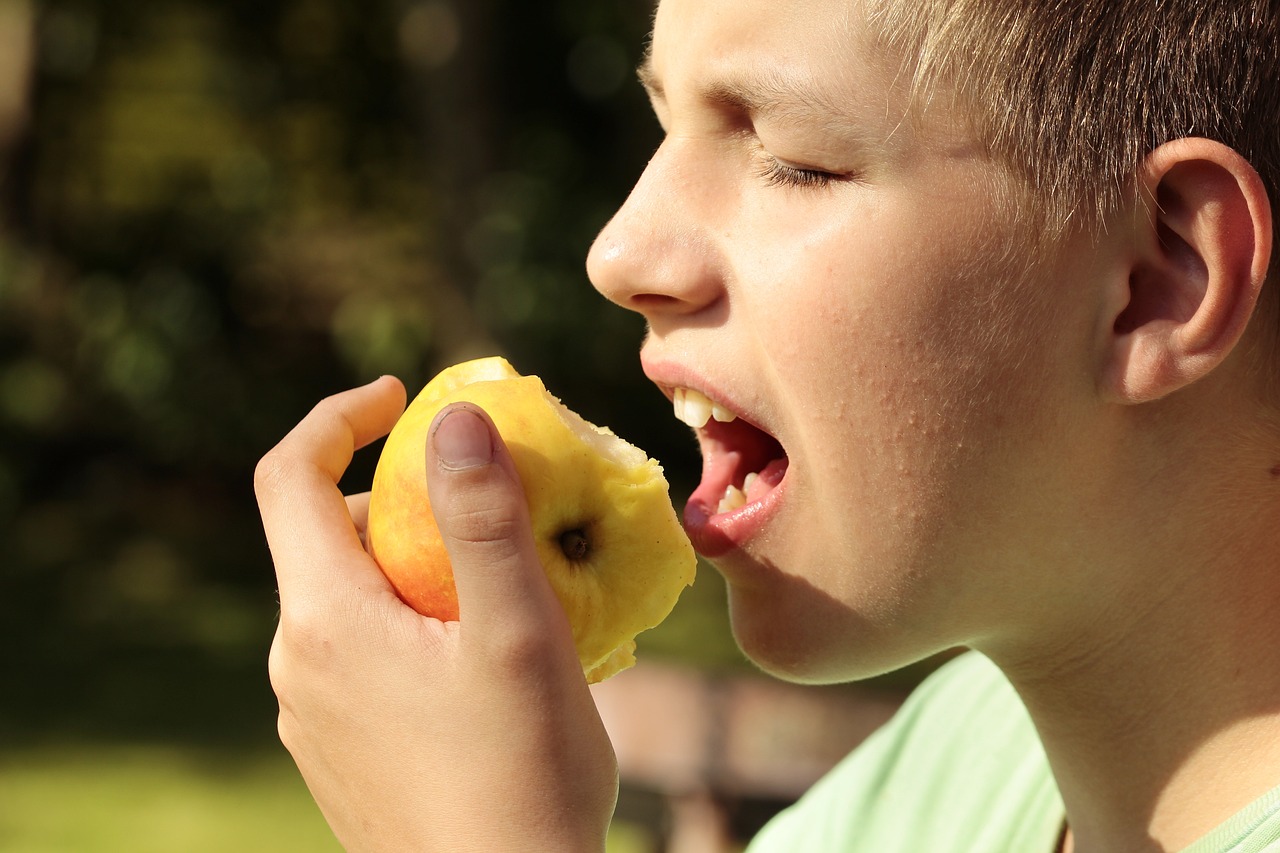This article delves into the unexpected strength of small dog breeds’ bites, shedding light on their anatomy, behavior, and how their bite force compares to that of larger breeds. Prepare to challenge your perceptions about small dogs and discover their remarkable capabilities.
The Anatomy of a Dog’s Bite
Understanding a dog’s mouth structure is essential for evaluating its bite strength. A dog’s bite involves a complex arrangement of teeth, jaws, and muscles that work together to produce force. Notably, small dogs often have strong jaw muscles relative to their size, enabling them to exert considerable pressure.
Measuring Bite Force: How It’s Done
Bite force is quantified in pounds per square inch (PSI). Various methods, such as bite force gauges, are employed to accurately measure this force. Understanding these measurements helps to comprehend the true strength of a dog’s bite.
Factors Influencing Bite Force
- Size
- Breed
- Jaw Structure
These factors play a crucial role in determining a dog’s overall biting power. Surprisingly, some small breeds can generate significant bite force, often exceeding expectations.
Size vs. Strength: A Common Misconception
It is a common belief that larger dogs possess stronger bites. However, this article explores how smaller breeds can also demonstrate impressive bite strength, debunking myths surrounding size and power.
Breed-Specific Characteristics
Certain small dog breeds, such as the Chihuahua and Jack Russell Terrier, are known for their formidable bite force. These breeds challenge the stereotype of small dogs being less capable.
Behavioral Aspects of Biting
A dog’s behavior significantly influences its biting tendencies. Factors such as fear, aggression, and playfulness can all affect how a dog interacts with its environment and how it uses its bite.
Top Small Dog Breeds with Strong Bites
- Chihuahua: Known as the “Tiny Titan,” Chihuahuas can deliver a surprisingly strong bite due to their tenacity and determination.
- Jack Russell Terrier: These fearless fighters have a reputation for their bold nature and impressive bite strength.
Understanding Dog Bite Statistics
Statistics reveal that small dogs are often involved in bite incidents, contrary to popular belief. Analyzing these trends helps to understand the dynamics of dog bites better.
Common Misconceptions About Small Dog Bites
Many underestimate the potential of small dogs to bite, leading to a lack of caution. This section addresses these misconceptions and emphasizes the importance of understanding small dog behavior.
Preventing Dog Bites: Best Practices
To minimize the risk of bites from small dogs, it’s essential for owners and the public to adopt best practices, such as proper training and socialization.
Conclusion: Rethinking Small Dog Strength
In conclusion, small dogs can possess surprisingly strong bites, challenging prevalent misconceptions. By understanding their anatomy, behavior, and bite force, we can foster better relationships between dogs and humans.

The Anatomy of a Dog’s Bite
Understanding the anatomy of a dog’s mouth is crucial to evaluating bite strength. A dog’s bite is not merely a function of its size; rather, it encompasses a complex interplay of various anatomical components. This section delves into the structure of teeth, jaws, and muscles that contribute to a dog’s biting capability.
First, let’s examine the teeth. Dogs have a total of 42 teeth, which include incisors, canines, premolars, and molars. Each type of tooth serves a specific purpose:
- Incisors: Used for nibbling and grooming.
- Canines: Designed for tearing and grasping, these are the longest and most prominent teeth.
- Premolars and Molars: These teeth are responsible for grinding food and can exert significant pressure when biting down.
The jaw structure also plays a vital role in bite strength. A dog’s jaw is a powerful mechanism, with the temporomandibular joint allowing for a wide range of motion. This joint, combined with strong jaw muscles, enables dogs to generate significant force when they bite.
Additionally, the muscles that control the jaw are crucial for bite power. The masseter and temporalis muscles are the primary muscles involved in biting. Their strength and efficiency can vary greatly among different breeds, influencing overall bite force.
In conclusion, the anatomy of a dog’s mouth is a fascinating subject that reveals much about its capabilities. By understanding the intricate details of a dog’s teeth, jaw structure, and biting muscles, we can better appreciate the factors that contribute to its biting strength. This knowledge not only enhances our understanding of canine behavior but also informs responsible dog ownership and training practices.

Measuring Bite Force: How It’s Done
Bite force is a critical measurement that provides insight into a dog’s strength and capabilities. It is quantified in pounds per square inch (PSI), a unit that helps in comparing the biting power of various dog breeds. Understanding how this force is measured and its implications can shed light on a dog’s behavior and potential.
To measure a dog’s bite force, researchers typically use specialized equipment that includes pressure sensors or bite force gauges. These devices are placed in the dog’s mouth, allowing for accurate readings as the dog bites down. The measurement process can vary slightly depending on the method used, but generally, it involves:
- Calibration: Ensuring that the equipment is set to provide accurate readings.
- Training the Dog: Familiarizing the dog with the equipment to minimize stress and ensure a natural bite.
- Recording Data: Taking multiple readings to ensure reliability and consistency.
The significance of measuring a dog’s bite force lies in its correlation with various factors, including breed characteristics, jaw structure, and muscle strength. For instance, breeds like the Rottweiler or Pit Bull are known for their powerful bites, which can exceed 300 PSI, while smaller breeds may exhibit lower readings.
Understanding these measurements is crucial for trainers, veterinarians, and dog owners alike. Not only does it help in assessing a dog’s physical capabilities, but it also aids in understanding behavioral tendencies. For example, a dog with a strong bite force may have different training needs compared to one with a weaker bite.
In conclusion, measuring bite force is an essential aspect of understanding a dog’s physical and behavioral traits. By analyzing these measurements, we can gain valuable insights into their strength and how it relates to their overall behavior.
Factors Influencing Bite Force
Understanding the bite force of dogs is essential for pet owners and enthusiasts alike. Several key factors play a significant role in determining how strong a dog’s bite can be. This section will explore these factors in detail, providing insights into the anatomy and characteristics that contribute to a dog’s biting power.
- Size of the Dog: Generally, larger dogs possess more muscle mass and stronger jaws, which can lead to a higher bite force. However, this is not a strict rule. Smaller breeds can surprise us with their strength.
- Breed Characteristics: Certain breeds are genetically predisposed to have stronger bite forces. For instance, breeds like the Pit Bull and Rottweiler are known for their powerful jaws, while some smaller breeds, such as the Chihuahua, can also deliver a surprisingly strong bite.
- Jaw Structure: The anatomy of a dog’s jaw, including its shape and alignment, plays a critical role in its bite force. Dogs with broader jaws may exert more pressure when biting, while those with narrower jaws may have less power.
- Muscle Strength: The strength of the muscles that control the jaw is vital. Well-developed muscles can enhance a dog’s ability to bite down with force, regardless of its size.
- Age and Health: A dog’s age and overall health can also impact bite force. Younger dogs may have more energy and strength, while older dogs may have diminished muscle mass and dental issues that affect their biting capability.
- Behavioral Factors: A dog’s emotional state can influence its bite strength. Fear or aggression may lead to a more forceful bite, while a playful dog may not exert as much pressure.
In summary, while size and breed are significant factors in determining a dog’s bite force, other elements such as jaw structure, muscle strength, and behavior also play crucial roles. Understanding these factors can help pet owners better appreciate their dogs’ capabilities and ensure safe interactions.
Size vs. Strength: A Common Misconception
When it comes to the world of dogs, a prevalent belief is that larger breeds possess inherently stronger bites. However, this notion is not only simplistic but also misleading. In reality, bite strength is influenced by a combination of factors, including anatomy, behavior, and specific breed characteristics.
To begin with, the anatomy of a dog’s mouth plays a crucial role in determining its bite force. While larger dogs have bigger jaws, smaller breeds often have a denser jaw structure and a different arrangement of teeth that can contribute to a surprisingly powerful bite. For instance, breeds like the Chihuahua and Jack Russell Terrier may be small in stature, but they have been known to deliver forceful bites that can surprise even the most seasoned dog owners.
Moreover, the behavior of a dog significantly impacts its biting capability. Factors such as fear, aggression, and playfulness can lead to variations in bite strength regardless of size. A small dog, when threatened, may exhibit a fierce bite that is disproportionate to its size. This behavior challenges the stereotype that only larger breeds can be formidable.
Additionally, some small breeds have been specifically bred for traits that enhance their biting power. For example, the Yorkshire Terrier is not only known for its adorable appearance but also for its tenacious spirit. Such breeds often have a bite force that rivals that of larger dogs, showcasing that size does not always correlate with strength.
In conclusion, while the misconception that larger dogs have stronger bites persists, it is essential to recognize that many small breeds can exhibit impressive biting capabilities. Understanding the nuances of size and strength can lead to better relationships between dogs and their owners, as well as a greater appreciation for the diverse abilities of all dog breeds.
Breed-Specific Characteristics
When discussing dog breeds, it is essential to recognize that certain small breeds possess unique characteristics that allow them to exhibit a surprisingly strong bite force. Contrary to the common perception that size equates to strength, many small dogs have anatomical and behavioral traits that enable them to deliver powerful bites. Below, we explore some of these remarkable breeds and their distinctive features.
| Breed | Bite Force (PSI) | Characteristics |
|---|---|---|
| Chihuahua | 100-200 | Known for their bold personalities, Chihuahuas may be small, but they are fiercely protective of their owners, often exhibiting a surprising level of confidence. |
| Jack Russell Terrier | 150-200 | This breed is known for its high energy and tenacity. Jack Russells are fearless and possess a strong prey drive, contributing to their powerful bite. |
| Pekingese | 100-150 | Pekingese dogs are known for their regal demeanor and strong attachment to their families. Their bite can be surprisingly strong for their size, especially when they feel threatened. |
| Dachshund | 120-180 | Originally bred for hunting, Dachshunds have strong jaws and an assertive nature, making their bite notable despite their small stature. |
These small breeds demonstrate that bite strength is not solely determined by size but also by a combination of genetics, behavior, and training. Understanding these breed-specific characteristics can help dog owners appreciate the capabilities of their pets, fostering a better relationship built on respect and knowledge.
In conclusion, while small dogs may not have the size advantage of larger breeds, their bite strength can be formidable. Recognizing these traits allows us to challenge misconceptions and appreciate the unique qualities that each breed brings to the canine world.
Behavioral Aspects of Biting
Understanding a dog’s behavior is crucial in assessing its biting tendencies. Factors such as fear, aggression, and playfulness can significantly influence how and why a dog may bite, regardless of its size. This section delves into these behavioral aspects to provide a comprehensive understanding of canine biting behavior.
Fear is one of the primary motivators behind a dog’s decision to bite. A dog that feels threatened or cornered may resort to biting as a means of self-defense. This reaction is often instinctual, and it can occur in any breed, regardless of size. For instance, a small dog may feel intimidated by a larger dog or a loud environment, prompting it to snap as a defensive mechanism.
On the other hand, aggression can stem from various sources, including territorial instincts, resource guarding, or lack of socialization. Dogs that are not properly socialized may react aggressively when they encounter new people or other animals. Small breeds are often underestimated, but they can display significant aggression if they feel their territory is being invaded or if they perceive a threat to their owners.
Additionally, a dog’s playfulness can also lead to biting, but this is typically different from aggressive biting. Playful bites are often gentle and are a part of normal dog behavior, especially among younger dogs. However, if not properly managed, playful biting can escalate and lead to unintended injuries, particularly in small breeds that may not realize their strength.
It’s essential for dog owners to understand these behavioral aspects and to train their dogs accordingly. Socialization and positive reinforcement training can help mitigate fear-based and aggressive behaviors, while also promoting healthy play interactions. By fostering a well-rounded and confident dog, owners can significantly reduce the likelihood of biting incidents.
In conclusion, a dog’s biting tendencies are influenced by a complex interplay of behavioral factors. Recognizing and addressing fear, aggression, and playfulness can help create a safer environment for both the dog and those around it.

Top Small Dog Breeds with Strong Bites
When it comes to small dog breeds, many people often underestimate their capabilities, especially regarding bite strength. While size may be small, the bite force of certain breeds can be surprisingly powerful. In this section, we will explore some of the top small dog breeds known for their impressive bite strength, along with insights into their unique characteristics and why they are capable of delivering such powerful bites.
| Breed | Bite Force (PSI) | Characteristics |
|---|---|---|
| Chihuahua | 100-150 PSI | Chihuahuas are known for their bold personalities and can exhibit a surprisingly strong bite for their size. Their alert nature makes them excellent watchdogs. |
| Jack Russell Terrier | 120-140 PSI | This breed is energetic and fearless, often showing tenacity in their behavior. Their strong jaws and determination contribute to their notable bite strength. |
| Pomeranian | 90-120 PSI | Pomeranians may be small, but they are known for their spirited nature. Their strong bite can be attributed to their playful yet protective instincts. |
| Dachshund | 60-100 PSI | Dachshunds are known for their stubbornness and courage. They have a surprisingly strong bite, which they may use when feeling threatened. |
These breeds highlight the fact that small dogs can possess significant bite strength, often surprising those who encounter them. Understanding the characteristics that contribute to their biting capabilities helps in fostering better relationships between these small dogs and their owners.
In conclusion, while small dogs may not have the physical size of larger breeds, their bite strength can be formidable. Recognizing and respecting this aspect of small dog breeds is essential for ensuring safety and promoting positive interactions.
Chihuahua: The Tiny Titan
Chihuahuas are often perceived as mere adorable companions due to their small stature, but their bite force is surprisingly formidable. This tiny breed, known for its spirited personality, can deliver a bite that is both powerful and impactful. Understanding the factors that contribute to this strength offers insights into their unique temperament and behavior.
One of the primary reasons Chihuahuas exhibit a strong bite is their anatomy. Despite their small size, they possess a well-developed jaw structure and strong muscles that allow them to exert considerable force. Their teeth are sharp and designed for tearing, which enhances their biting capability. This anatomical advantage enables them to defend themselves effectively, even against larger adversaries.
Another factor contributing to their bite strength is their temperament. Chihuahuas are known for their fearlessness and loyalty, often displaying protective behaviors towards their owners. This protective instinct can lead to aggressive biting when they feel threatened. Additionally, their playful nature can sometimes result in nipping, which, while not meant to harm, can still be quite painful.
Socialization plays a crucial role in managing a Chihuahua’s biting tendencies. Proper training and exposure to various environments can help mitigate aggressive behaviors. Owners should focus on positive reinforcement techniques to encourage desirable behaviors and reduce the likelihood of biting.
In conclusion, while Chihuahuas may be diminutive in size, their bite force is a testament to their bravery and tenacity. Understanding their anatomy, temperament, and the importance of socialization can help owners foster a well-adjusted pet. By appreciating the strengths of this breed, we can better support their needs and build stronger relationships with our tiny titans.
Jack Russell Terrier: A Fearless Fighter
Jack Russell Terriers are renowned for their boldness and tenacity, traits that make them stand out among small dog breeds. Despite their compact size, these dogs possess a surprisingly powerful bite force, which is a testament to their fearless nature and determined character.
Originally bred for hunting, Jack Russell Terriers have a unique combination of muscle structure and jaw strength that allows them to exert significant pressure with their bites. Studies indicate that their bite force can reach up to 200 PSI (pounds per square inch), which is impressive for a dog of their size. This strength is not just a physical attribute; it is also a reflection of their energetic personality and fearless attitude towards challenges.
One of the reasons behind their bold nature is their high energy levels. Jack Russells are known for their playfulness and curiosity, which can sometimes lead to aggressive behavior if they feel threatened or if their territory is invaded. Their intelligence and stubbornness also play a role in their biting behavior, as they may bite out of excitement or as a means of asserting dominance.
Furthermore, the socialization and training of a Jack Russell Terrier are crucial in shaping their behavior. Proper training can help mitigate any aggressive tendencies and harness their energy in a positive way. Owners should focus on early socialization to teach these dogs how to interact appropriately with other animals and humans.
In conclusion, the Jack Russell Terrier exemplifies the notion that size does not dictate strength. Their powerful bite and bold nature make them formidable companions, capable of surprising those who underestimate them. Understanding these traits is essential for anyone considering bringing a Jack Russell into their home.

Understanding Dog Bite Statistics
is crucial for pet owners, animal lovers, and the general public. Statistics regarding dog bites reveal important insights into the prevalence of bites among small dogs. This section examines data and trends to shed light on bite incidents involving smaller breeds, challenging the common perception that only larger dogs pose a threat.
According to the American Veterinary Medical Association, small dog breeds, such as Chihuahuas and Dachshunds, contribute significantly to dog bite incidents. A study indicated that approximately 30% of reported dog bites come from dogs weighing less than 20 pounds. This statistic highlights the need for awareness regarding the behavior of smaller breeds.
| Dog Breed | Percentage of Bites |
|---|---|
| Chihuahua | 12% |
| Dachshund | 10% |
| Jack Russell Terrier | 8% |
| Pomeranian | 6% |
Behavioral aspects play a significant role in these statistics. Small dogs often exhibit fear-based aggression, which can lead to biting incidents. Additionally, their playful nature can sometimes be misinterpreted as aggression, leading to misunderstandings between dogs and humans.
Moreover, it is essential to recognize that many people underestimate the potential for small dogs to bite. This misconception can lead to dangerous situations, especially for children who may not know how to interact with them properly. Educating the public about the behaviors and needs of small dogs can help reduce bite incidents.
In conclusion, understanding dog bite statistics related to small breeds is vital for promoting safety and responsible pet ownership. By addressing misconceptions and raising awareness, we can foster better relationships between dogs and humans.
Common Misconceptions About Small Dog Bites
When it comes to dog bites, many individuals often underestimate the potential of small dog breeds. This misconception can lead to dangerous situations and a lack of understanding regarding their behavior. In reality, small dogs can exhibit significant biting power, and it is crucial to recognize this fact to ensure both safety and proper training.
One of the primary reasons people overlook the biting capabilities of small dogs is the perception that size equals strength. Many believe that only larger breeds can deliver a strong bite. However, this is a misunderstanding. The anatomy of a dog’s jaw and teeth plays a vital role in determining bite force. Small dogs, such as Chihuahuas and Jack Russell Terriers, possess robust jaw structures that enable them to exert considerable pressure, often surprising their owners.
Additionally, the behavior of small dogs can significantly influence their biting tendencies. Factors such as fear, territorial instincts, and playfulness can trigger a small dog to bite, irrespective of its size. Understanding these behavioral aspects is essential for dog owners and helps in preventing potential incidents.
Furthermore, statistics reveal that small dogs are involved in a notable number of biting incidents. This highlights the importance of educating the public about the realities of small dog behavior. Owners should be aware that even the tiniest dog can bite if it feels threatened or provoked.
In conclusion, it is vital to acknowledge the strength and potential of small dog bites. By dispelling common myths and fostering a deeper understanding of their behavior, we can create safer environments for both dogs and humans. Proper training and socialization can significantly reduce the risk of bites, ensuring that small dogs are seen as the loving companions they truly are.
Preventing Dog Bites: Best Practices
Preventing dog bites is essential for ensuring the safety of both humans and dogs. While small dogs may be perceived as less threatening, they can still bite when provoked or frightened. This section provides practical tips for dog owners and the general public to minimize the risk of bites from small dogs.
- Socialization is Key: Early socialization of small dogs is crucial. Expose them to various environments, people, and other animals to help them develop a calm and confident demeanor.
- Teach Basic Commands: Training your dog to respond to basic commands such as “sit,” “stay,” and “leave it” can help manage their behavior and prevent aggressive responses in stressful situations.
- Recognize Warning Signs: Learn to identify signs of discomfort or aggression in dogs, such as growling, baring teeth, or a stiff body posture. Understanding these signals can help you avoid potential bites.
- Supervise Interactions: Always supervise interactions between small dogs and children or unfamiliar individuals. This can prevent accidental injuries and help teach children how to interact gently.
- Provide a Safe Space: Ensure that your dog has a safe space where they can retreat when feeling overwhelmed. This can help reduce anxiety and decrease the likelihood of biting.
- Regular Vet Check-Ups: Regular veterinary visits can help identify any health issues that may contribute to aggressive behavior, ensuring your dog remains healthy and well-adjusted.
- Educate Others: Teach friends and family about proper dog etiquette. Encourage them to ask for permission before petting your dog and to respect their space.
By implementing these best practices, dog owners can significantly reduce the risk of bites from small dogs, fostering a safer environment for everyone.

Conclusion: Rethinking Small Dog Strength
In the realm of canine companions, the perception that small dogs are less formidable than their larger counterparts is a common misconception. However, the reality is that small dogs can possess surprisingly strong bites, challenging the traditional views held by many dog owners and enthusiasts. This article aims to delve deeper into the anatomy, behavior, and bite force of these diminutive breeds, highlighting their capabilities and fostering a greater understanding between humans and their canine friends.
The anatomy of a dog’s mouth plays a crucial role in its biting power. Small dogs, despite their size, often have strong jaw muscles and sharp teeth that contribute to their bite force. Understanding these anatomical features can provide insights into why certain small breeds can deliver a surprisingly potent bite.
Measuring bite force is typically done in pounds per square inch (PSI). While larger breeds like the Rottweiler or German Shepherd often take the spotlight for their impressive bite force, many small breeds also show remarkable strength. For instance, studies have revealed that breeds such as the Chihuahua and Jack Russell Terrier can exert considerable pressure, often exceeding what one might expect from their size.
Several factors influence a dog’s bite force, including breed characteristics and individual temperament. Interestingly, smaller breeds can have a higher bite force relative to their size compared to larger breeds. This phenomenon emphasizes that size does not always correlate with strength, and it’s important to recognize the unique attributes of each breed.
Moreover, a dog’s behavior significantly impacts its likelihood to bite. Factors such as fear, aggression, and even playfulness can lead to unexpected biting incidents. Understanding these behavioral aspects is essential for dog owners to mitigate risks and foster positive interactions.
In conclusion, rethinking the strength of small dogs is crucial for fostering better relationships between humans and their pets. By understanding their anatomy, behavior, and potential bite force, we can appreciate the unique strengths of small dog breeds and promote a more informed perspective on their capabilities.
Frequently Asked Questions
- Can small dogs really have a strong bite?
Absolutely! Despite their size, many small dog breeds possess surprisingly strong bite forces. Their bite strength can sometimes rival that of larger breeds, challenging the common belief that only big dogs can pack a punch.
- What factors influence a dog’s bite force?
Several factors come into play, including the dog’s size, breed, jaw structure, and even their temperament. For instance, certain breeds, like the Chihuahua and Jack Russell Terrier, are known for their robust bites due to their unique anatomical features.
- Are smaller dogs more likely to bite than larger dogs?
Not necessarily! While small dogs can bite, the likelihood often depends on their behavior and environment rather than their size. Factors like fear, aggression, or playfulness can influence any dog’s tendency to bite, regardless of its stature.
- How can I prevent dog bites from small breeds?
Preventing bites involves understanding dog behavior and ensuring proper training. Socializing your small dog, recognizing signs of discomfort or aggression, and teaching them commands can significantly reduce the risk of bites.
- What are some small dog breeds known for their strong bites?
Some notable small dog breeds with impressive bite strength include the Chihuahua, Jack Russell Terrier, and Miniature Pinscher. These breeds often surprise people with their tenacity and strength!












